Effect of Temperature on the Physical Salt Attack of Cement Mortars under Repeated Partial Immersion in Sodium Sulfate Solution
Abstract
:1. Introduction
2. Materials and Methods
2.1. Materials
2.2. Specimen Preparation
2.3. PSA Exposure
2.3.1. Pre-Conditioning of Specimens
2.3.2. Exposure Conditions
- (i)
- 16 h partial immersion in 13 wt% sodium sulfate solution at 35 °C. The high-concentration sodium sulfate solution was selected to accelerate the salt accumulation in the drying portion of the specimen.
- (ii)
- All specimens were removed from the container and placed in an oven for 8 h. The temperature of the oven was set to 50 °C to avoid the alteration of the pore structure [28]. Thenardite (Na2SO4) was expected to be the stable phase in this stage based on the phase diagram of sodium sulfate [29], as shown in Figure 3.
- (iii)
- Every three salt-contaminated specimens were partially immersed in 5 wt% sodium sulfate solutions at 5 °C, 20 °C and 35 °C for 16 h, separately marked as specimens T5, T20 and T35. The 5 wt% sodium sulfate solution was close to the concentration suggested by ASTM C1012 [30]. At low temperatures (5 °C and 20 °C), as in the ASTM [31] and EN 12370 [32] tests, the crystallization is driven by the dissolution of thenardite that is formed during stage (ii) and the formation of a solution supersaturated with mirabilite (Na2SO4·10H2O). At 35 °C, above the thenardite-mirabilite transition temperature of 32.4 °C, no supersaturated solution forms during this stage.
- (iv)
- All specimens were subjected to drying under 50 °C for 8 h.
2.4. Measurement
2.4.1. Marco-Structural Monitoring
2.4.2. Characterization of Mineralogical and Microstructural Alteration
3. Results
3.1. Macroscale Observation
3.1.1. Visual Appearance
3.1.2. Weight Evolution
3.1.3. Size Distribution of Scaled Materials
3.2. Alteration in Microscopic Properties
3.2.1. Mineral Compositions of Salt-Contaminated Specimens
3.2.2. Distribution of Salt in the Specimen
4. Discussion
4.1. The Role of Salt Contamination
4.2. The Role of Temperature
5. Conclusions
- Damage was observed by the scaling of the outer surface of the cement mortar at the locations above the solution level. The surface scaling mainly developed in the middle zone of the drying portion of the specimen since more thenardite was accumulated in these regions.
- Scaling occurred during the formation of mirabilite at temperatures of 5 °C and 20 °C. No damage was observed when the PSA exposure was performed at 35 °C, above the thenardite-mirabilite transition temperature, showing that the crystallization of thenardite was almost not dangerous to the cement mortar.
- PSA damage was more significant at 5 °C than at 20 °C, and this can be attributed to the higher degree of supersaturation achieved during the conversion from thenardite to mirabilite at the lower temperature. At the end of the exposure, the specimens T5 and T20 lost 2.0% and 0.9% of their initial weight, respectively. The damage pattern also varied with the temperature. At 5 °C, granular disintegration occurred, and the scaled materials contained 75–100% particles smaller than 2.36 mm in size. At 20 °C, contour scaling resulted in the loss of 20–50% of flake with a diameter greater than 2.36 mm.
- This study qualitatively illustrates the effect of salt accumulation on the development of damage. Further research is needed to quantify the relationship between the pore filling volume and the onset of damage under different temperatures.
Author Contributions
Funding
Institutional Review Board Statement
Informed Consent Statement
Acknowledgments
Conflicts of Interest
References
- ACI Committee 201. Guide to Durable Concrete; American Concrete Institute: Farmington Hills, MI, USA, 2016. [Google Scholar]
- Mehta, P.K.; Monteiro, P.J.M. Concrete: Microstructure, Properties, and Materials, 4th ed.; McGraw-Hill Education: New York, NY, USA, 2014. [Google Scholar]
- Stark, D. Performance of Concrete in Sulfate Environments; Portland Cement Association: Skokie, IL, USA, 2002; p. 23. [Google Scholar]
- Irassar, E.F.; Maio, A.D.; Batic, O.R. Sulfate attack on concrete with mineral admixtures. Cem. Concr. Res. 1996, 26, 113–123. [Google Scholar] [CrossRef]
- Baghabra Al-Amoudi, O.S. Attack on plain and blended cements exposed to aggressive sulfate environments. Cem. Concr. Compos. 2002, 24, 305–316. [Google Scholar] [CrossRef]
- Yoshida, N.; Matsunami, Y.; Nagayama, M.; Sakai, E. Salt Weathering in Residential Concrete Foundations Exposed to Sulfate-bearing Ground. J. Adv. Concr. Technol. 2010, 8, 121–134. [Google Scholar] [CrossRef]
- Novak, G.A.; Colville, A.A. Efflorescent mineral assemblages associated with cracked and degraded residential concrete foundations in Southern California. Cem. Concr. Res. 1989, 19, 1–6. [Google Scholar] [CrossRef]
- Liu, Z.; Zhu, J.; Yuan, Q.; Wang, C.; Zhang, F. Solution transportation in concrete partially exposed to Na2SO4 solution. J. Sustain. Cem.-Based Mater. 2020, 9, 371–381. [Google Scholar] [CrossRef]
- Liu, Z.; Hu, W.; Pei, M.; Deng, D. The role of carbonation in the occurrence of MgSO4 crystallization distress on concrete. Constr. Build. Mater. 2018, 192, 167–178. [Google Scholar] [CrossRef]
- Liu, Z.; Hu, W.; Hou, L.; Deng, D. Effect of carbonation on physical sulfate attack on concrete by Na2SO4. Constr. Build. Mater. 2018, 193, 211–220. [Google Scholar] [CrossRef]
- Huang, Q.; Zhu, X.; Zhao, L.; Zhao, M.; Liu, Y.; Zeng, X. Effect of nanosilica on sulfate resistance of cement mortar under partial immersion. Constr. Build. Mater. 2020, 231, 117180. [Google Scholar] [CrossRef]
- Suleiman, A.R.; Nehdi, M.L. Exploring effects of supplementary cementitious materials in concrete exposed to physical salt attack. Mag. Concr. Res. 2017, 69, 576–585. [Google Scholar] [CrossRef]
- Sakr, M.R.; Bassuoni, M.T.; Taha, M.R. Effect of Coatings on Concrete Resistance to Physical Salt Attack. ACI Mater. J. 2019, 116, 255–267. [Google Scholar] [CrossRef]
- Sakr, M.R.; Bassuoni, M.T. Performance of concrete under accelerated physical salt attack and carbonation. Cem. Concr. Res. 2021, 141, 106324. [Google Scholar] [CrossRef]
- Alyami, M.H.; Alrashidi, R.S.; Mosavi, H.; Almarshoud, M.A.; Riding, K.A. Potential accelerated test methods for physical sulfate attack on concrete. Constr. Build. Mater. 2019, 229, 116920. [Google Scholar] [CrossRef]
- Stark, D. Durability of Concrete in Sulfate-Rich Soils; Portland Cement Association: Skokie, IL, USA, 1989. [Google Scholar]
- Nehdi, M.L.; Suleiman, A.R.; Soliman, A.M. Investigation of concrete exposed to dual sulfate attack. Cem. Concr. Res. 2014, 64, 42–53. [Google Scholar] [CrossRef]
- Nader Ghafoori, I.B.; Meysam, N. Influence of Nanosilica on Physical Salt Attack Resistance of Portland Cement Mortar. ACI Mater. J. 2020, 117, 67–80. [Google Scholar] [CrossRef]
- Lee, B.Y.; Kurtis, K.E. Effect of pore structure on salt crystallization damage of cement-based materials: Consideration of w/b and nanoparticle use. Cem. Concr. Res. 2017, 98, 61–70. [Google Scholar] [CrossRef]
- Bassuoni, M.T.; Rahman, M.M. Response of concrete to accelerated physical salt attack exposure. Cem. Concr. Res. 2016, 79, 395–408. [Google Scholar] [CrossRef]
- Scherer, G.W. Stress from crystallization of salt. Cem. Concr. Res. 2004, 34, 1613–1624. [Google Scholar] [CrossRef]
- Rodriguez-Navarro, C.; Doehne, E. Salt weathering: Influence of evaporation rate, supersaturation and crystallization pattern. Earth Surf. Proc. Land 1999, 24, 191–209. [Google Scholar] [CrossRef]
- Ruiz-Agudo, E.; Mees, F.; Jacobs, P.; Rodriguez-Navarro, C. The role of saline solution properties on porous limestone salt weathering by magnesium and sodium sulfates. Environ. Geol. 2007, 52, 305–317. [Google Scholar] [CrossRef]
- Lubelli, B.; Cnudde, V.; Diaz-Goncalves, T.; Franzoni, E.; van Hees, R.P.J.; Ioannou, I.; Menendez, B.; Nunes, C.; Siedel, H.; Stefanidou, M.; et al. Towards a more effective and reliable salt crystallization test for porous building materials: State of the art. Mater. Struct. 2018, 51, 55. [Google Scholar] [CrossRef]
- Haynes, H.; Bassuoni, M.T. Physical salt attack on concrete. Concr. Int. 2011, 33, 38–42. [Google Scholar]
- Angeli, M.; Hébert, R.; Menéndez, B.; David, C.; Bigas, J.P. Influence of temperature and salt concentration on the salt weathering of a sedimentary stone with sodium sulphate. Eng. Geol. 2010, 115, 193–199. [Google Scholar] [CrossRef]
- Flatt, R.J.; Caruso, F.; Sanchez, A.M.; Scherer, G.W. Chemo-mechanics of salt damage in stone. Nat. Commun. 2014, 5, 4823. [Google Scholar] [CrossRef] [PubMed]
- Neville, A.M. Properties of Concrete, 3rd ed.; Longman Scientific and Technical: Essex, UK, 1981. [Google Scholar]
- Flatt, R.J. Salt damage in porous materials: How high supersaturations are generated. J. Cryst. Growth 2002, 242, 435–454. [Google Scholar] [CrossRef]
- ASTM C1012; Standard Test Method for Length Change of Hydraulic Cement Mortars Exposed to a Sulfate Solution. ASTM International: West Conshohocken, PA, USA, 2015.
- ASTM C88; Standard Test Method for Soundness of Aggregates by Use of Sodium Sulfate or Magnesium Sulfate. ASTM International: West Conshohocken, PA, USA, 2018.
- BS EN 12370; Natural Stone Test Methods: Determination of Resistance to Salt Crystallization. British Standards Institution: London, UK, 2020.
- Garrett, D.E. Phase data and physical properties. In Sodium Sulfate; Garrett, D.E., Ed.; Academic Press: San Diego, CA, USA, 2001; pp. 317–351. [Google Scholar]
- Taylor, H.F. Cement Chemistry, 2nd ed.; Thomas Telford London: London, UK, 1997. [Google Scholar]
- Rasmussen, S.E.; Jorgensen, J.-E.; Lundtoft, B. Structures and phase transitions of Na2SO4. J. Appl. Crystallogr. 1996, 29, 42–47. [Google Scholar] [CrossRef]
- Tsui, N.; Flatt, R.J.; Scherer, G.W. Crystallization damage by sodium sulfate. J. Cult. Herit. 2003, 4, 109–115. [Google Scholar] [CrossRef]
- Huang, Q.; Zhao, L.; Zhao, C.; Liu, D.; Wang, C. Microstructure Change of Nanosilica–Cement Composites Partially Exposed to Sulfate Attack. Int. J. Concr. Struct. Mater. 2020, 14, 27. [Google Scholar] [CrossRef]
- Liu, Z.Q.; Li, X.N.; Deng, D.H.; De Schutter, G. The damage of calcium sulfoaluminate cement paste partially immersed in MgSO4 solution. Mater. Struct. 2016, 49, 719–727. [Google Scholar] [CrossRef]
- Aye, T.; Oguchi, C.T. Resistance of plain and blended cement mortars exposed to severe sulfate attacks. Constr. Build. Mater. 2011, 25, 2988–2996. [Google Scholar] [CrossRef]
- Zhang, Z.; Zhou, J.; Yang, J.; Zou, Y.; Wang, Z. Cracking characteristics and pore development in concrete due to physical attack. Mater. Struct. 2020, 53, 104. [Google Scholar] [CrossRef]
- Coussy, O. Deformation and stress from in-pore drying-induced crystallization of salt. J. Mech. Phys. Solids 2006, 54, 1517–1547. [Google Scholar] [CrossRef]
- Steiger, M.; Asmussen, S. Crystallization of sodium sulfate phases in porous materials: The phase diagram Na2SO4–H2O and the generation of stress. Geochim. Cosmochim. Acta 2008, 72, 4291–4306. [Google Scholar] [CrossRef]
- Skoczylas, F.; Burlion, N.; Yurtdas, I. About drying effects and poro-mechanical behaviour of mortars. Cem. Concr. Compos. 2007, 29, 383–390. [Google Scholar] [CrossRef]
- Steiger, M. Crystal growth in porous materials—II: Influence of crystal size on the crystallization pressure. J. Cryst. Growth 2005, 282, 470–481. [Google Scholar] [CrossRef]
- Steiger, M. Crystal growth in porous materials—I: The crystallization pressure of large crystals. J. Cryst. Growth 2005, 282, 455–469. [Google Scholar] [CrossRef]
- Bizzozero, J.; Gosselin, C.; Scrivener, K.L. Expansion mechanisms in calcium aluminate and sulfoaluminate systems with calcium sulfate. Cem. Concr. Res. 2014, 56, 190–202. [Google Scholar] [CrossRef]
- Jiang, X.; Mu, S.; Yang, Z.; Tang, J.; Li, T. Effect of temperature on durability of cement-based material to physical sulfate attack. Constr. Build. Mater. 2021, 266, 120936. [Google Scholar] [CrossRef]


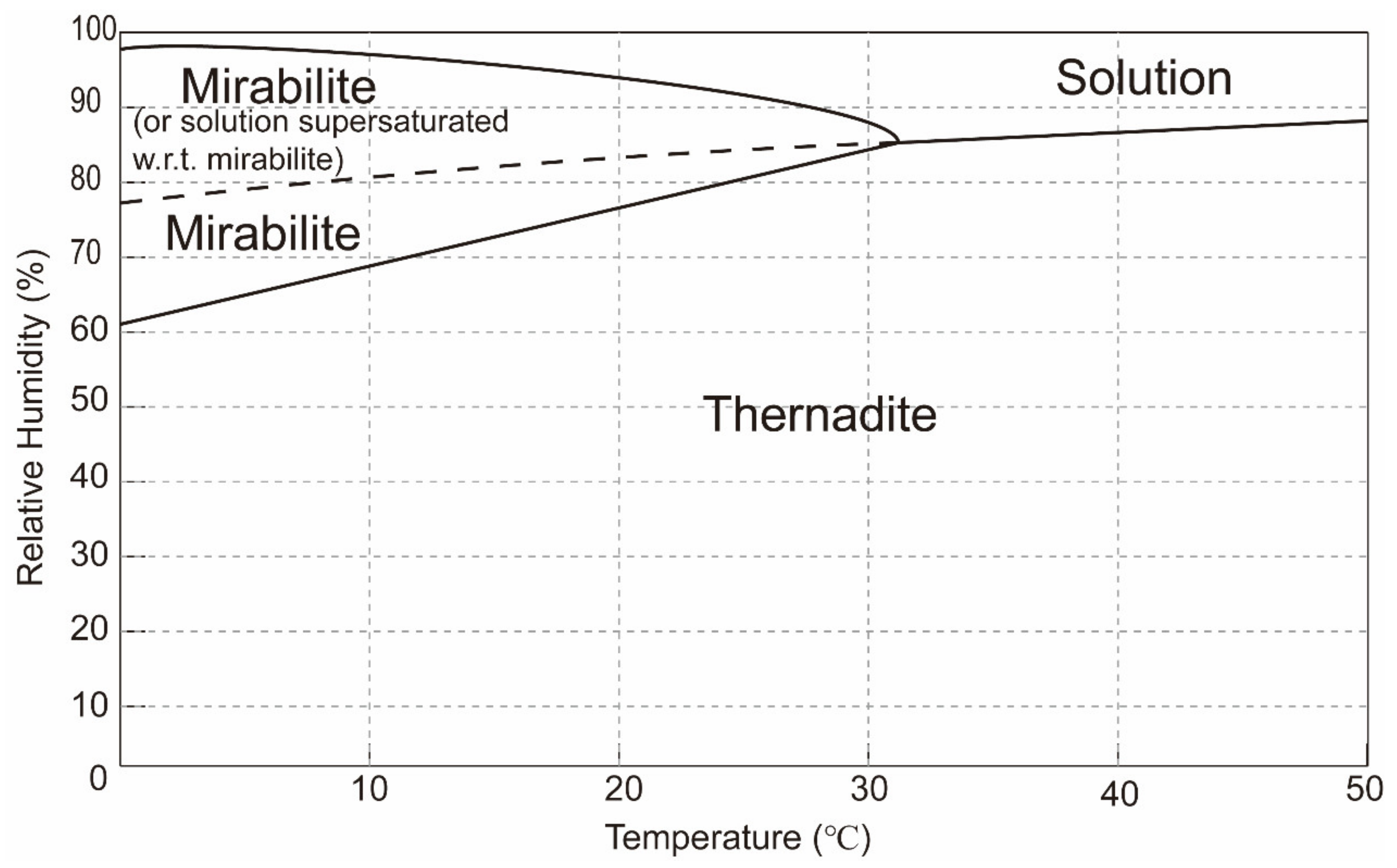
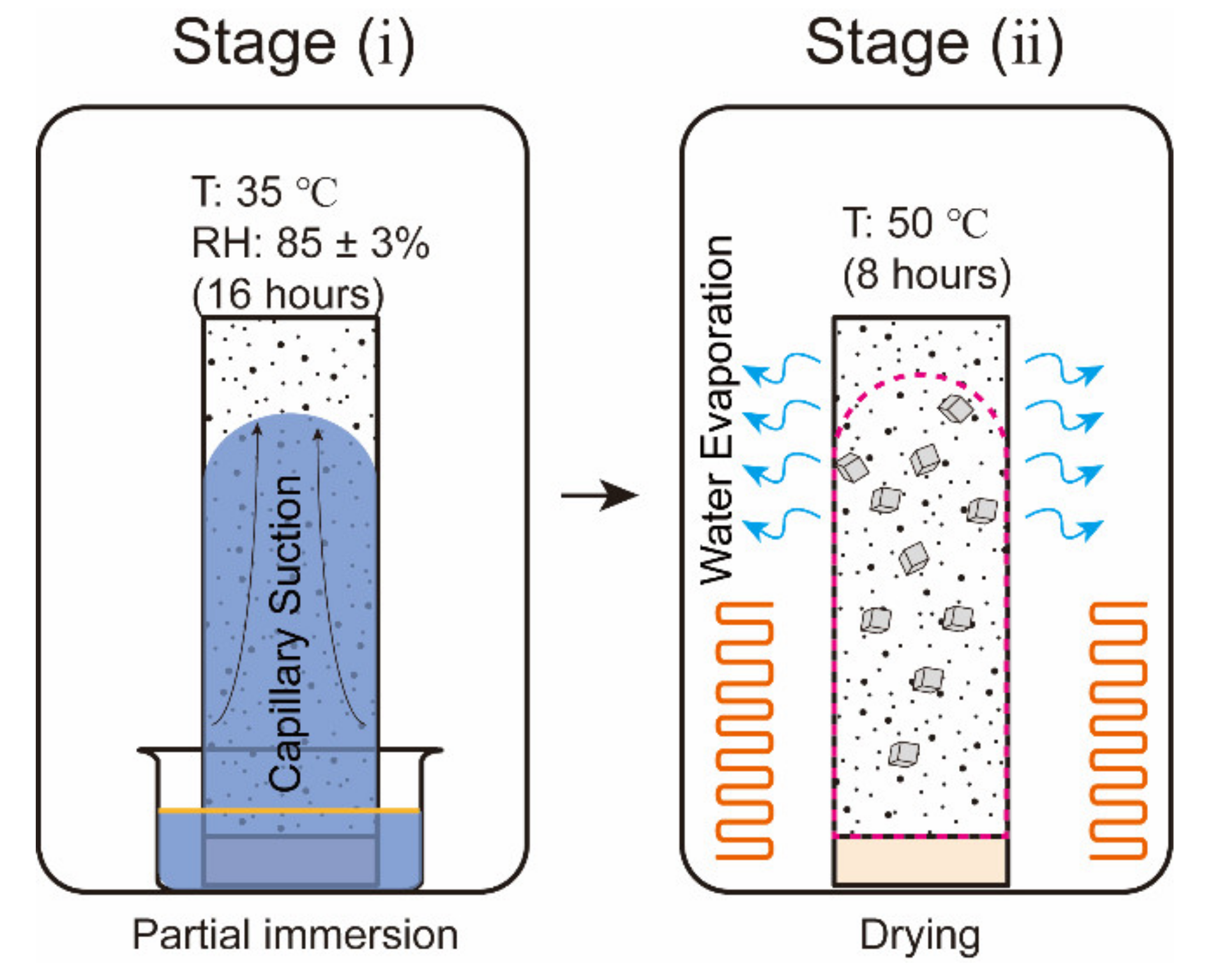
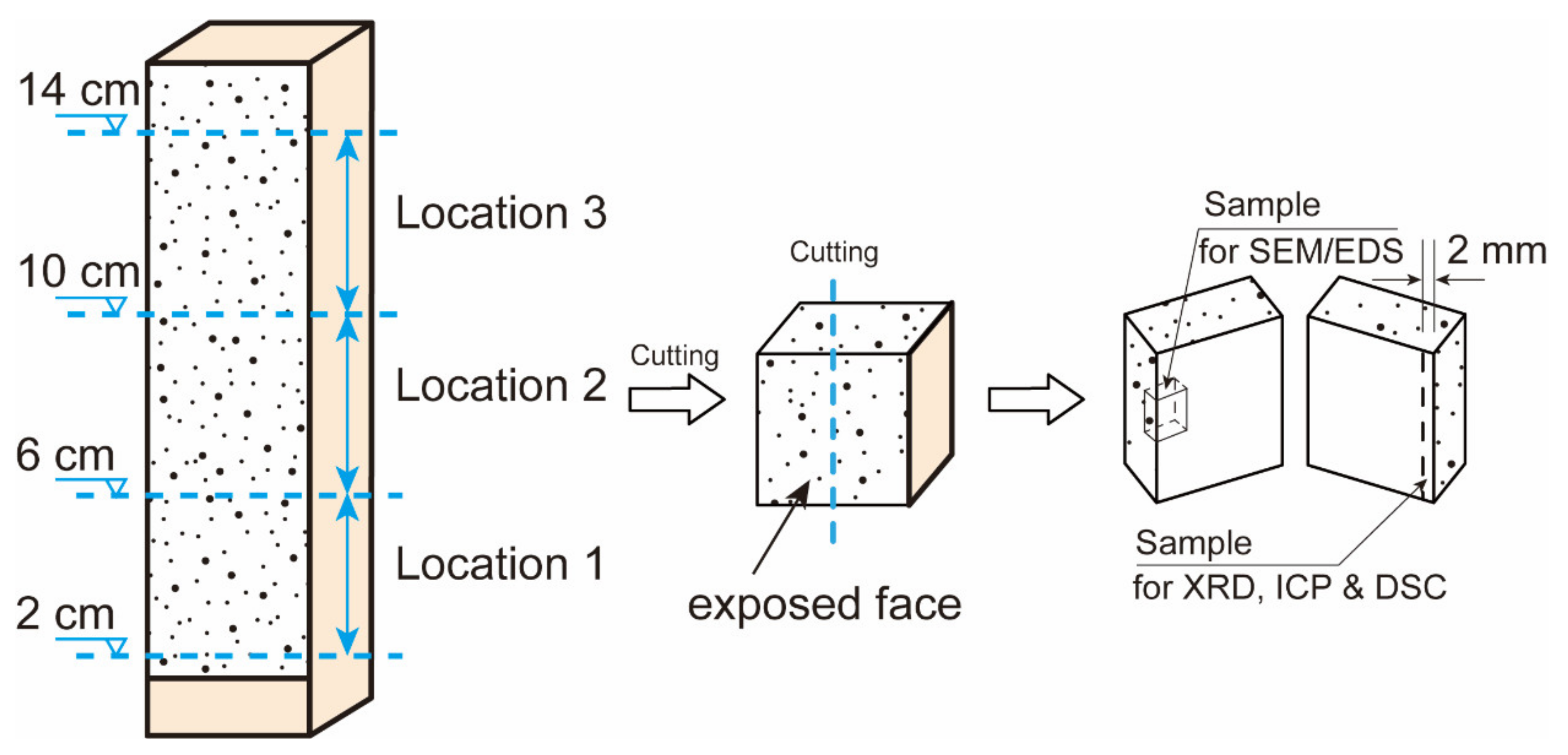



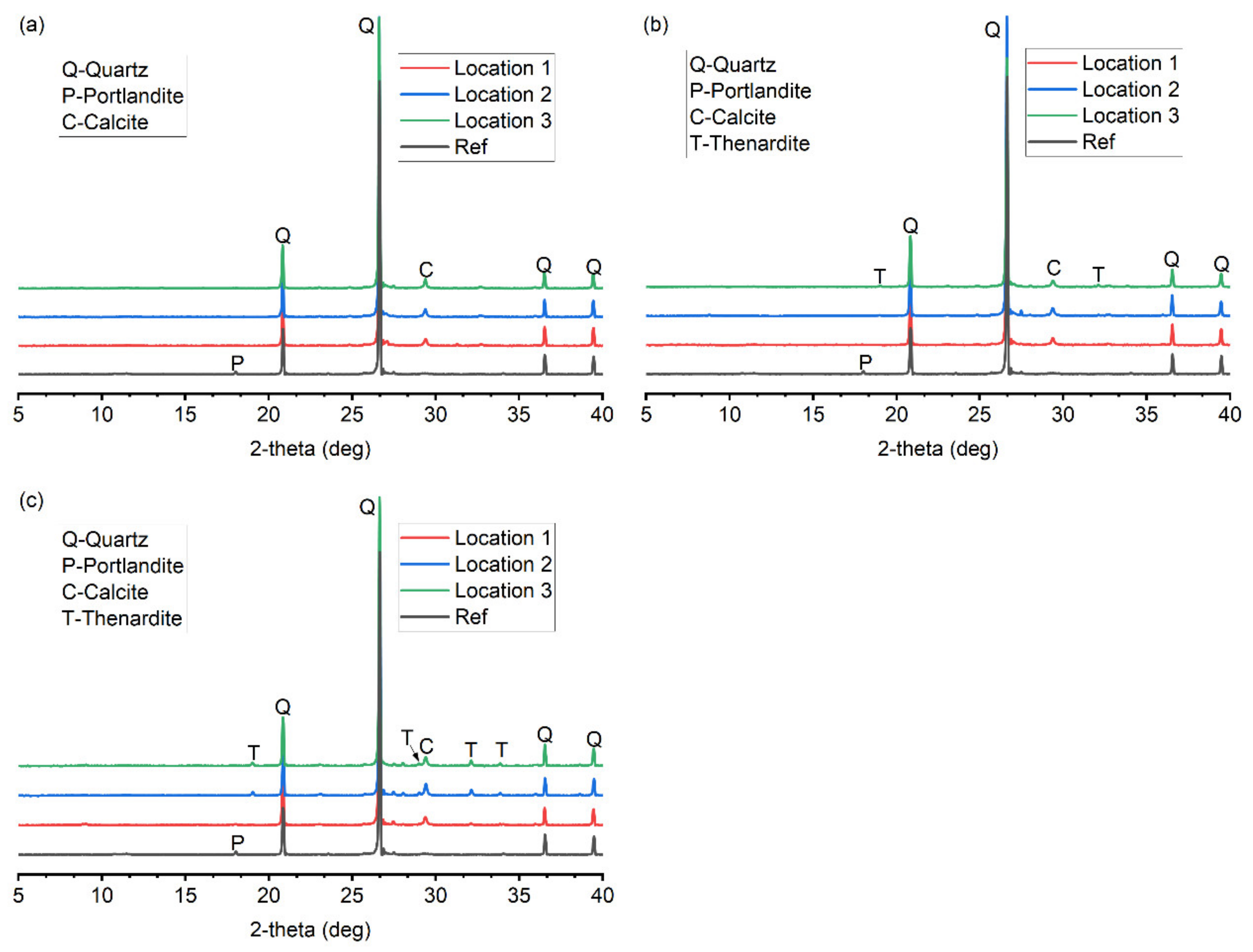



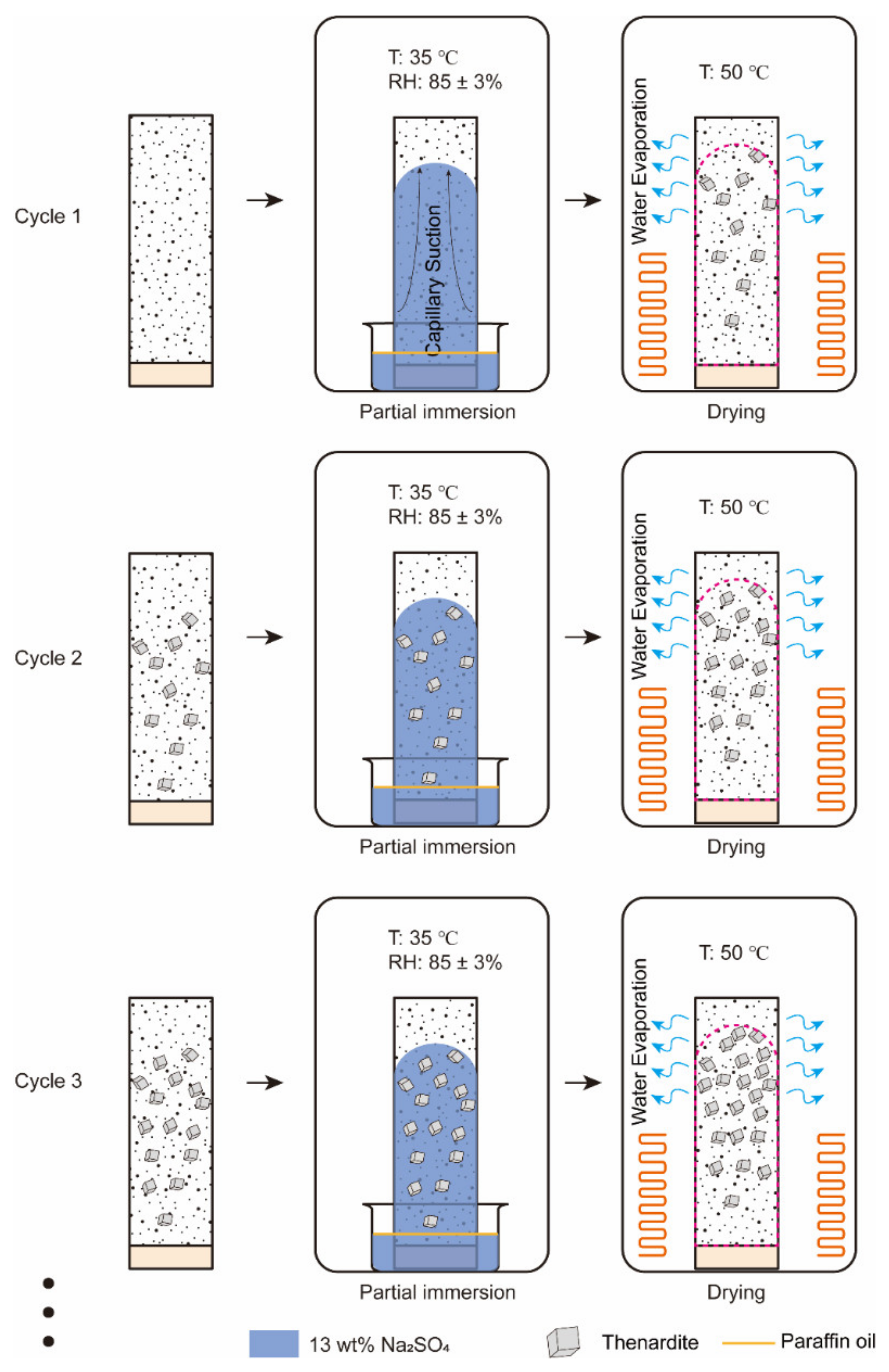
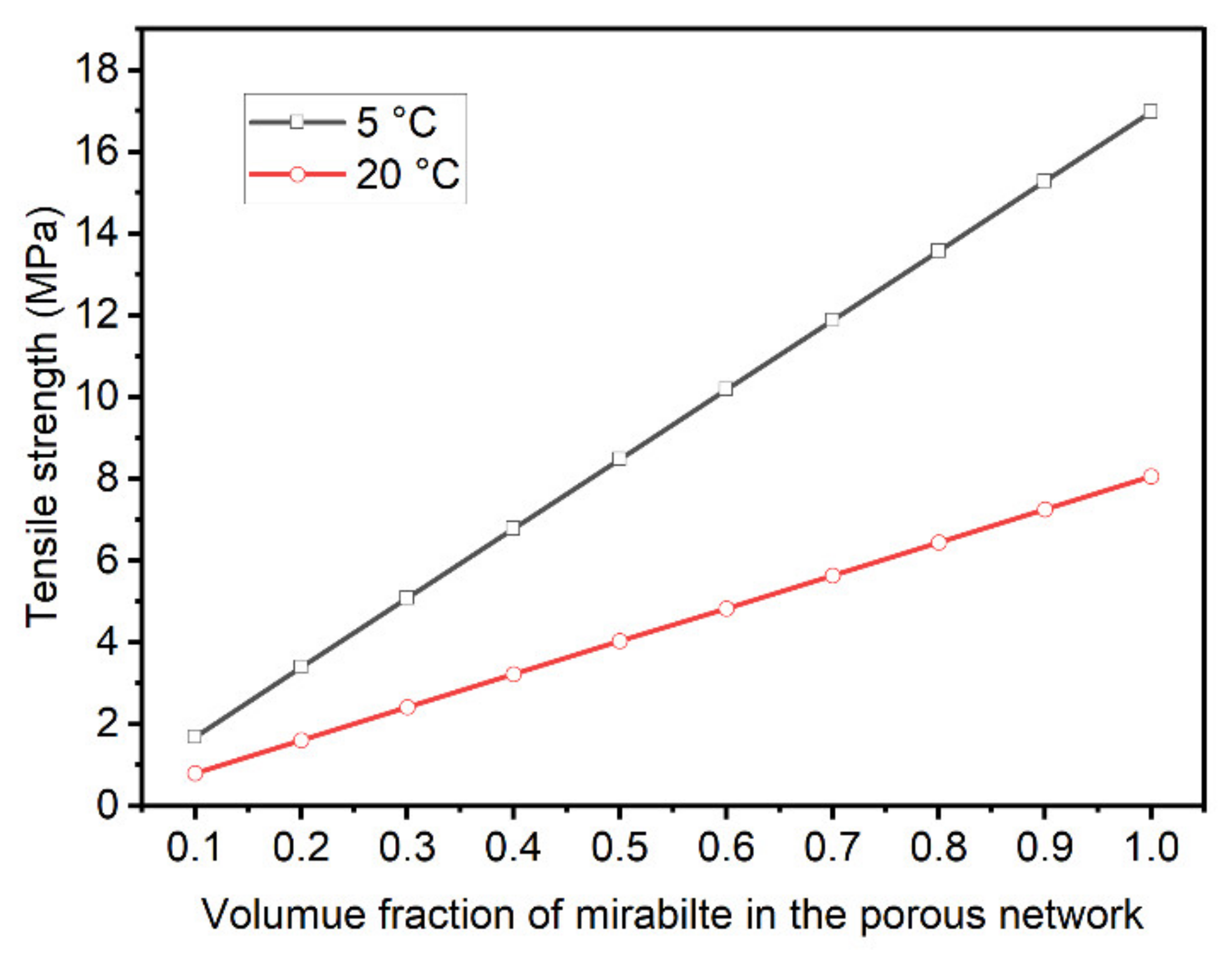
| PC | GGBS | |
|---|---|---|
| Chemical composition | ||
| SiO2 (%) | 19.10 | 30.10 |
| Al2O3 (%) | 4.61 | 14.50 |
| Fe2O3 (%) | 3.10 | 0.80 |
| CaO (%) | 62.75 | 40.10 |
| MgO (%) | 1.87 | 8.19 |
| SO3 (%) | 2.62 | 0.38 |
| Na2O (%) | 0.17 | 0.49 |
| K2O (%) | 0.42 | 0.51 |
| Physical properties | ||
| Specific surface area (m2/kg) | 342 | 373 |
| Specific gravity (g/cm3) | 3.07 | 2.85 |
Publisher’s Note: MDPI stays neutral with regard to jurisdictional claims in published maps and institutional affiliations. |
© 2022 by the authors. Licensee MDPI, Basel, Switzerland. This article is an open access article distributed under the terms and conditions of the Creative Commons Attribution (CC BY) license (https://creativecommons.org/licenses/by/4.0/).
Share and Cite
Jiang, X.; Mu, S.; Guo, Z.; Liu, G. Effect of Temperature on the Physical Salt Attack of Cement Mortars under Repeated Partial Immersion in Sodium Sulfate Solution. Materials 2022, 15, 6234. https://doi.org/10.3390/ma15186234
Jiang X, Mu S, Guo Z, Liu G. Effect of Temperature on the Physical Salt Attack of Cement Mortars under Repeated Partial Immersion in Sodium Sulfate Solution. Materials. 2022; 15(18):6234. https://doi.org/10.3390/ma15186234
Chicago/Turabian StyleJiang, Xing, Song Mu, Zheng Guo, and Guangyan Liu. 2022. "Effect of Temperature on the Physical Salt Attack of Cement Mortars under Repeated Partial Immersion in Sodium Sulfate Solution" Materials 15, no. 18: 6234. https://doi.org/10.3390/ma15186234




